Zhongwen Zhu
Robust Federated Finetuning of Foundation Models via Alternating Minimization of LoRA
Sep 04, 2024
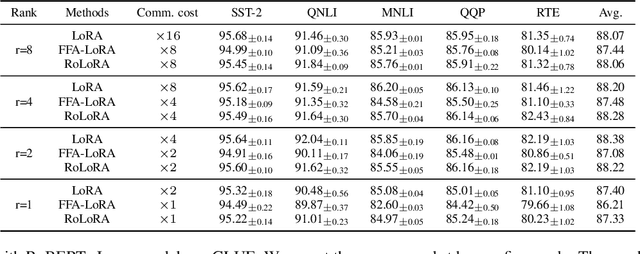
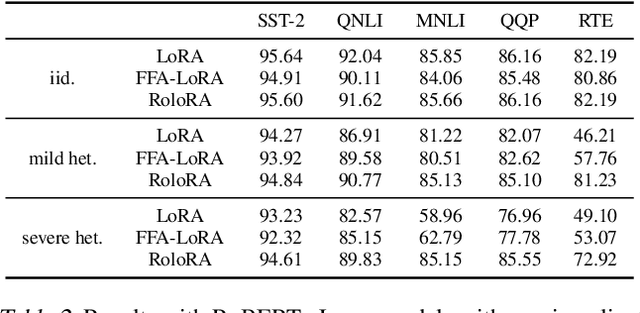

Abstract:Parameter-Efficient Fine-Tuning (PEFT) has risen as an innovative training strategy that updates only a select few model parameters, significantly lowering both computational and memory demands. PEFT also helps to decrease data transfer in federated learning settings, where communication depends on the size of updates. In this work, we explore the constraints of previous studies that integrate a well-known PEFT method named LoRA with federated fine-tuning, then introduce RoLoRA, a robust federated fine-tuning framework that utilizes an alternating minimization approach for LoRA, providing greater robustness against decreasing fine-tuning parameters and increasing data heterogeneity. Our results indicate that RoLoRA not only presents the communication benefits but also substantially enhances the robustness and effectiveness in multiple federated fine-tuning scenarios.
Root Cause Analysis of Anomalies in 5G RAN Using Graph Neural Network and Transformer
Jun 21, 2024



Abstract:The emergence of 5G technology marks a significant milestone in developing telecommunication networks, enabling exciting new applications such as augmented reality and self-driving vehicles. However, these improvements bring an increased management complexity and a special concern in dealing with failures, as the applications 5G intends to support heavily rely on high network performance and low latency. Thus, automatic self-healing solutions have become effective in dealing with this requirement, allowing a learning-based system to automatically detect anomalies and perform Root Cause Analysis (RCA). However, there are inherent challenges to the implementation of such intelligent systems. First, there is a lack of suitable data for anomaly detection and RCA, as labelled data for failure scenarios is uncommon. Secondly, current intelligent solutions are tailored to LTE networks and do not fully capture the spatio-temporal characteristics present in the data. Considering this, we utilize a calibrated simulator, Simu5G, and generate open-source data for normal and failure scenarios. Using this data, we propose Simba, a state-of-the-art approach for anomaly detection and root cause analysis in 5G Radio Access Networks (RANs). We leverage Graph Neural Networks to capture spatial relationships while a Transformer model is used to learn the temporal dependencies of the data. We implement a prototype of Simba and evaluate it over multiple failures. The outcomes are compared against existing solutions to confirm the superiority of Simba.
A Calibrated and Automated Simulator for Innovations in 5G
Apr 16, 2024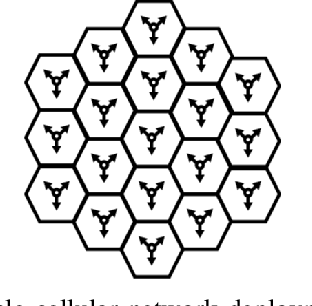
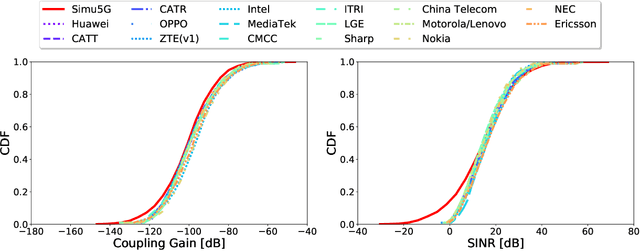
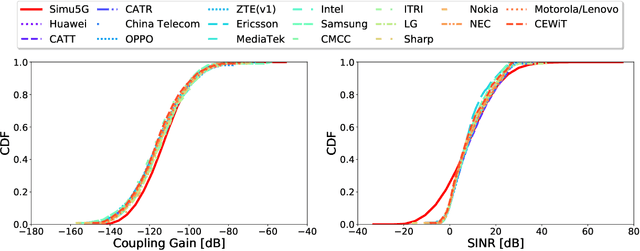
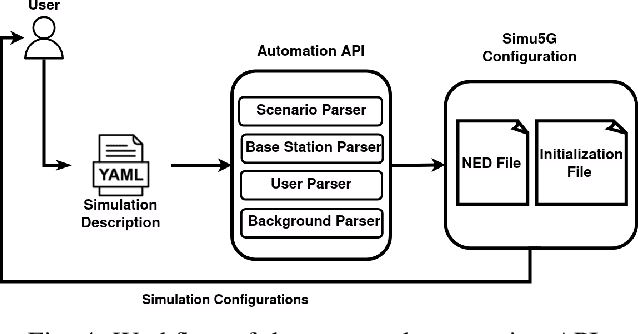
Abstract:The rise of 5G deployments has created the environment for many emerging technologies to flourish. Self-driving vehicles, Augmented and Virtual Reality, and remote operations are examples of applications that leverage 5G networks' support for extremely low latency, high bandwidth, and increased throughput. However, the complex architecture of 5G hinders innovation due to the lack of accessibility to testbeds or realistic simulators with adequate 5G functionalities. Also, configuring and managing simulators are complex and time consuming. Finally, the lack of adequate representative data hinders the data-driven designs in 5G campaigns. Thus, we calibrated a system-level open-source simulator, Simu5G, following 3GPP guidelines to enable faster innovation in the 5G domain. Furthermore, we developed an API for automatic simulator configuration without knowing the underlying architectural details. Finally, we demonstrate the usage of the calibrated and automated simulator by developing an ML-based anomaly detection in a 5G Radio Access Network (RAN).
Semi-Weakly Supervised Object Detection by Sampling Pseudo Ground-Truth Boxes
Apr 01, 2022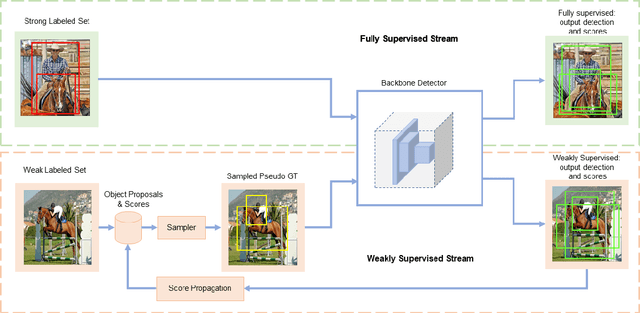

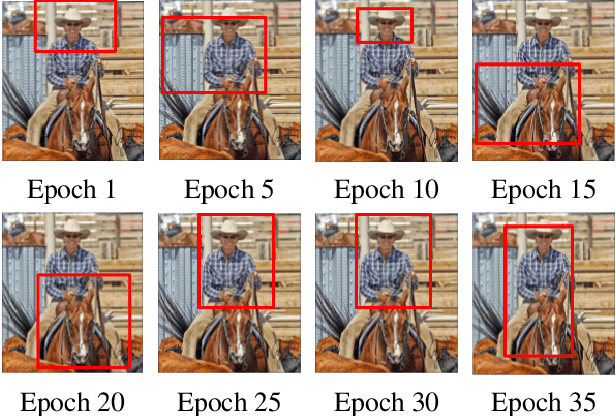
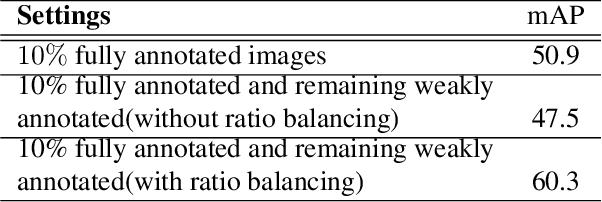
Abstract:Semi- and weakly-supervised learning have recently attracted considerable attention in the object detection literature since they can alleviate the cost of annotation needed to successfully train deep learning models. State-of-art approaches for semi-supervised learning rely on student-teacher models trained using a multi-stage process, and considerable data augmentation. Custom networks have been developed for the weakly-supervised setting, making it difficult to adapt to different detectors. In this paper, a weakly semi-supervised training method is introduced that reduces these training challenges, yet achieves state-of-the-art performance by leveraging only a small fraction of fully-labeled images with information in weakly-labeled images. In particular, our generic sampling-based learning strategy produces pseudo-ground-truth (GT) bounding box annotations in an online fashion, eliminating the need for multi-stage training, and student-teacher network configurations. These pseudo GT boxes are sampled from weakly-labeled images based on the categorical score of object proposals accumulated via a score propagation process. Empirical results on the Pascal VOC dataset, indicate that the proposed approach improves performance by 5.0% when using VOC 2007 as fully-labeled, and VOC 2012 as weak-labeled data. Also, with 5-10% fully annotated images, we observed an improvement of more than 10% in mAP, showing that a modest investment in image-level annotation, can substantially improve detection performance.
Structure-aware reinforcement learning for node-overload protection in mobile edge computing
Jun 29, 2021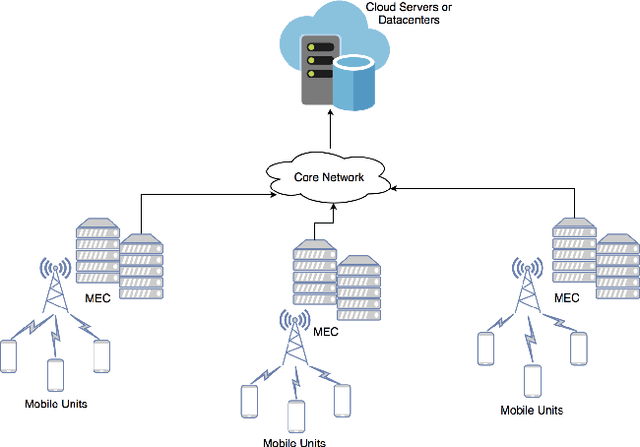
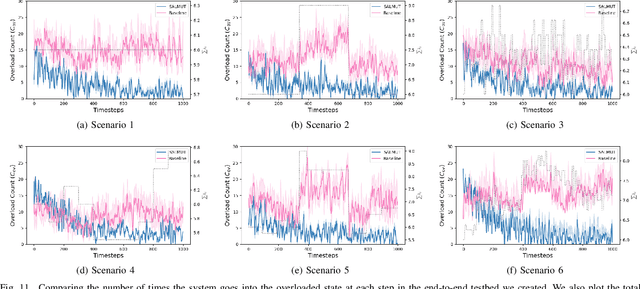
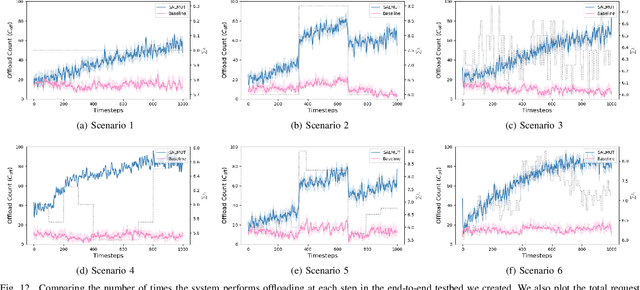
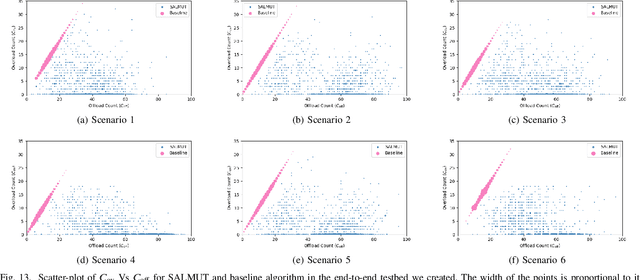
Abstract:Mobile Edge Computing (MEC) refers to the concept of placing computational capability and applications at the edge of the network, providing benefits such as reduced latency in handling client requests, reduced network congestion, and improved performance of applications. The performance and reliability of MEC are degraded significantly when one or several edge servers in the cluster are overloaded. Especially when a server crashes due to the overload, it causes service failures in MEC. In this work, an adaptive admission control policy to prevent edge node from getting overloaded is presented. This approach is based on a recently-proposed low complexity RL (Reinforcement Learning) algorithm called SALMUT (Structure-Aware Learning for Multiple Thresholds), which exploits the structure of the optimal admission control policy in multi-class queues for an average-cost setting. We extend the framework to work for node overload-protection problem in a discounted-cost setting. The proposed solution is validated using several scenarios mimicking real-world deployments in two different settings - computer simulations and a docker testbed. Our empirical evaluations show that the total discounted cost incurred by SALMUT is similar to state-of-the-art deep RL algorithms such as PPO (Proximal Policy Optimization) and A2C (Advantage Actor Critic) but requires an order of magnitude less time to train, outputs easily interpretable policy, and can be deployed in an online manner.
 Add to Chrome
Add to Chrome Add to Firefox
Add to Firefox Add to Edge
Add to Edge